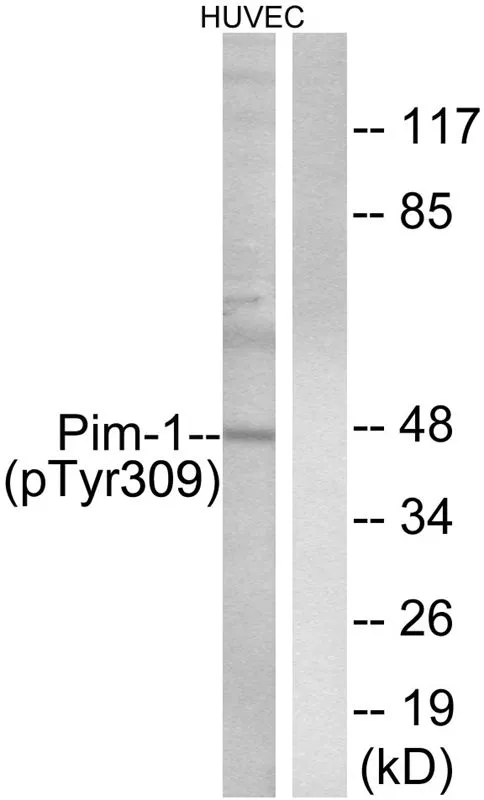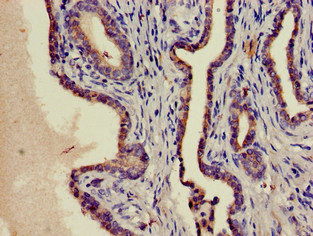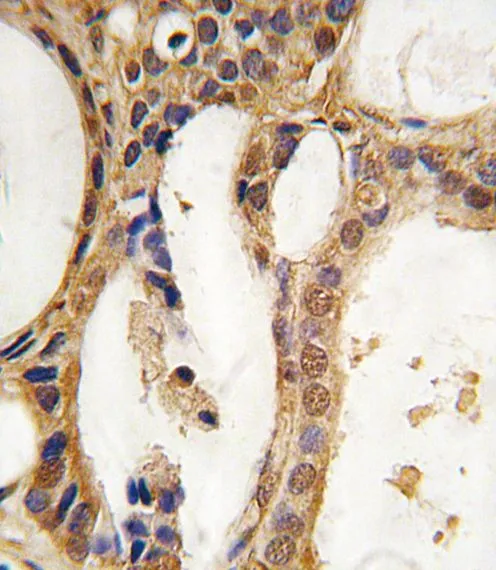
WB analysis of extracts from HUVEC cells treated with PMA using GTX55311 PIM1 (phospho Tyr309) antibody. Left : Primary antibody Right : Primary antibody pre-incubated with the antigen specific peptide
PIM1 (phospho Tyr309) antibody
GTX55311
ApplicationsWestern Blot
Product group Antibodies
TargetPIM1
Overview
- SupplierGeneTex
- Product NamePIM1 (phospho Tyr309) antibody
- Delivery Days Customer9
- Application Supplier NoteWB: 1:500-1:1000. *Optimal dilutions/concentrations should be determined by the researcher.Not tested in other applications.
- ApplicationsWestern Blot
- CertificationResearch Use Only
- ClonalityPolyclonal
- Concentration1 mg/ml
- ConjugateUnconjugated
- Gene ID5292
- Target namePIM1
- Target descriptionPim-1 proto-oncogene, serine/threonine kinase
- Target synonymsPIM, serine/threonine-protein kinase pim-1, Oncogene PIM1, pim-1 oncogene (proviral integration site 1), proto-oncogene serine/threonine-protein kinase pim-1
- HostRabbit
- IsotypeIgG
- Protein IDP11309
- Protein NameSerine/threonine-protein kinase pim-1
- Scientific DescriptionThe protein encoded by this gene belongs to the Ser/Thr protein kinase family, and PIM subfamily. This gene is expressed primarily in B-lymphoid and myeloid cell lines, and is overexpressed in hematopoietic malignancies and in prostate cancer. It plays a role in signal transduction in blood cells, contributing to both cell proliferation and survival, and thus provides a selective advantage in tumorigenesis. Both the human and orthologous mouse genes have been reported to encode two isoforms (with preferential cellular localization) resulting from the use of alternative in-frame translation initiation codons, the upstream non-AUG (CUG) and downstream AUG codons (PMIDs:16186805, 1825810).[provided by RefSeq, Aug 2011]
- Storage Instruction-20°C or -80°C,2°C to 8°C
- UNSPSC12352203



![IHC-P analysis of human colon tissue section using GTX00954 PIM1 antibody [GT1192]. Dilution : 1:100](https://www.genetex.com/upload/website/prouct_img/normal/GTX00954/GTX00954_20200508_IHC-P_1_w_23053121_102.webp)


